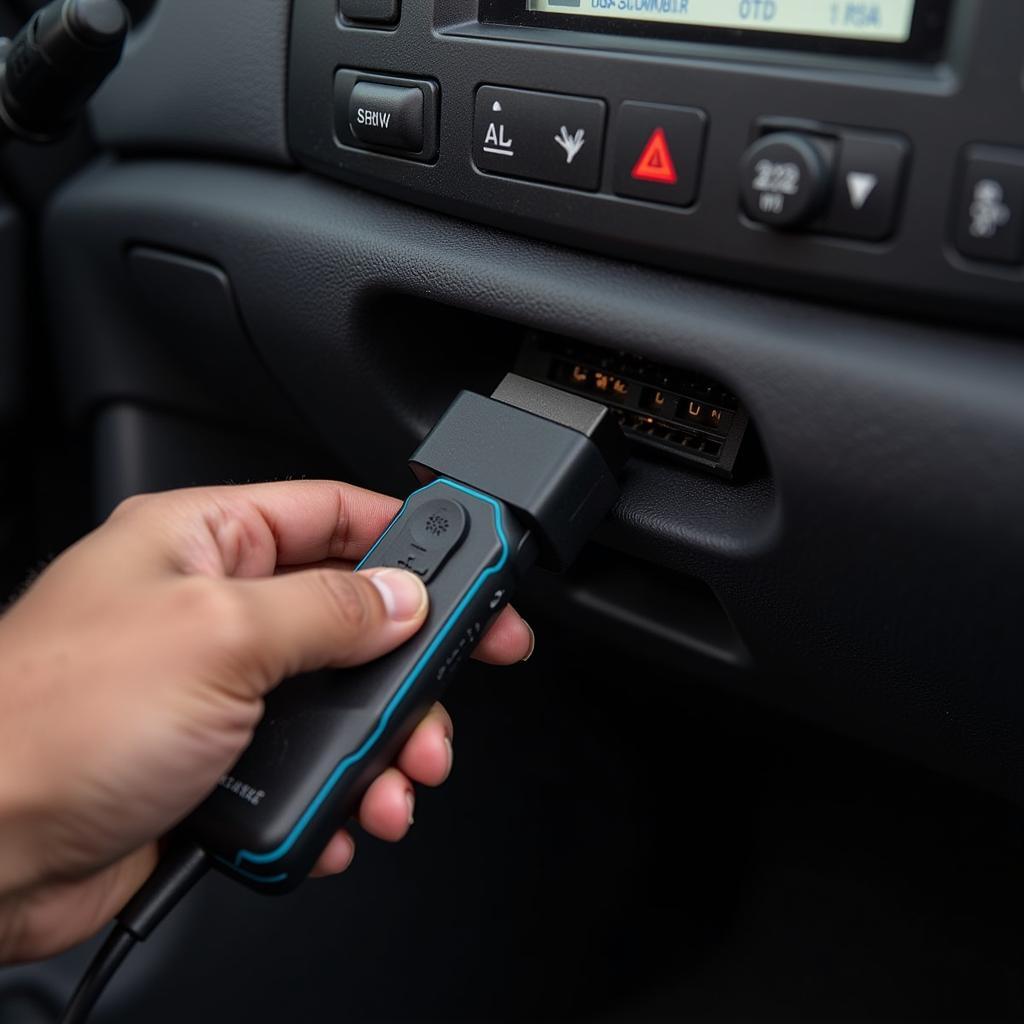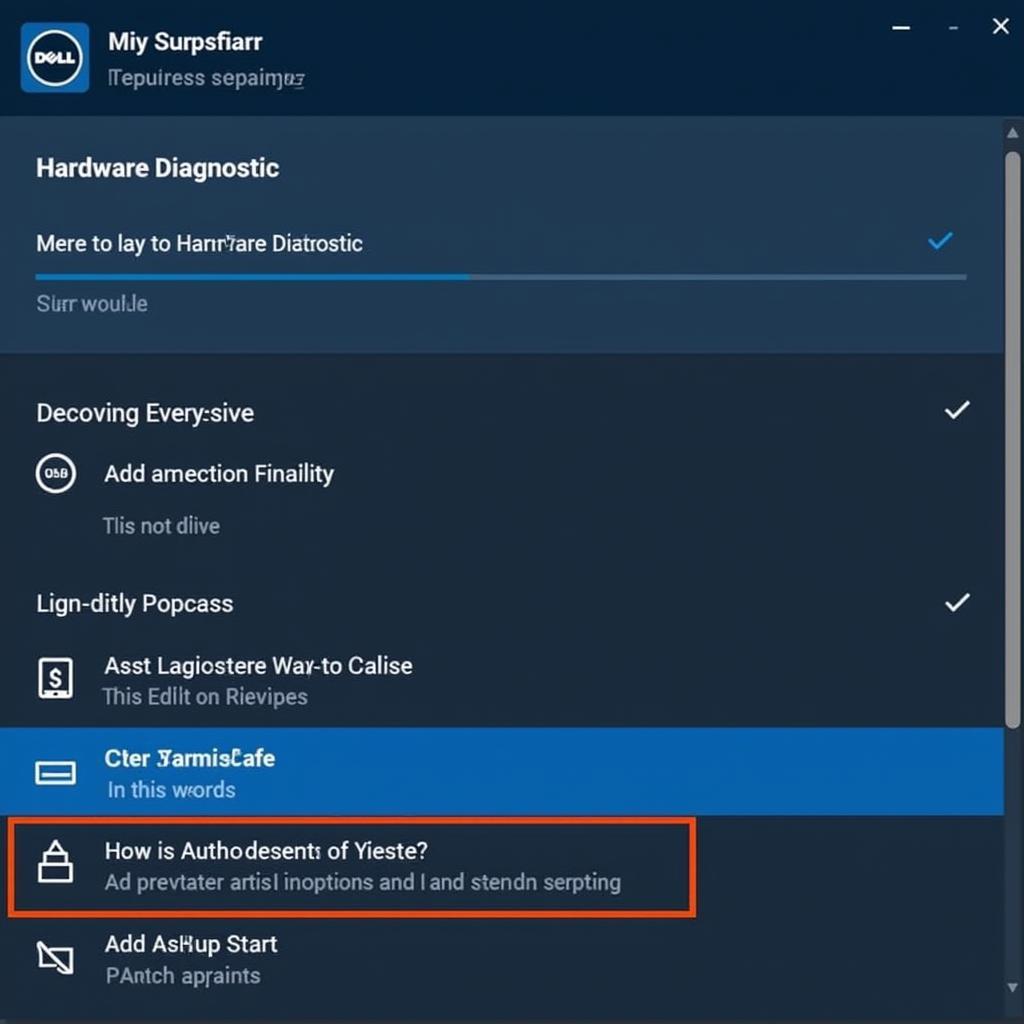A car diagnostic tool can feel intimidating at first, leaving many wondering, “Is The Cars Diagnostic Tool Hard?” The truth is, it depends. While professional-grade tools can be complex, many user-friendly options are available for everyday car owners. This article will explore the varying levels of car diagnostic tools, from simple code readers to advanced scan tools, and discuss their ease of use.
Understanding Car Diagnostic Tools: From Simple to Complex
Car diagnostic tools range from basic code readers to highly sophisticated most advanced car diagnostic tool. A basic code reader simply retrieves Diagnostic Trouble Codes (DTCs), which are error codes stored in your car’s computer. These codes indicate potential issues within various systems. More advanced tools, often referred to as scan tools, offer deeper functionalities like live data streaming, bi-directional controls, and special functions for specific car makes. The complexity and functionality often correlate directly with the price.
What Makes a Diagnostic Tool Difficult?
Several factors can contribute to the perceived difficulty of a car diagnostic tool. Firstly, the user interface can be a significant hurdle. Some tools have complex menus and require navigating through various screens. Secondly, understanding the retrieved data is crucial. Simply having a code doesn’t solve the problem; you need to know how to interpret it. Finally, some advanced functionalities, such as bi-directional controls, require a deeper understanding of automotive systems to use safely and effectively.
Is a Basic Code Reader Easy to Use?
Generally, basic code readers are designed for ease of use. They typically plug into the OBD-II port, usually located under the dashboard, and display the retrieved codes on a small screen. Some even connect wirelessly to your smartphone, providing a more user-friendly interface. However, even with a simple code reader, correctly identifying the problem requires looking up the code’s meaning and conducting further investigation.
How User-Friendly are Advanced Scan Tools?
Advanced scan tools, such as those used by professional mechanics, offer more features but can be more challenging to master. These tools might require training or significant experience to use effectively. The depth of information they provide can be overwhelming for a beginner. However, some manufacturers design their advanced scan tools with intuitive interfaces and guided functionalities to simplify the process.
Choosing the Right Tool for Your Needs
The best diagnostic tool for you depends on your technical skills and what you intend to achieve. If you’re a car enthusiast looking to perform basic diagnostics and maintenance, a simple code reader or a mid-range scan tool is sufficient. However, if you’re a professional mechanic or plan on tackling more complex repairs, investing in a full laptop diagnostic sweep tools is worthwhile.
Can I Damage My Car With a Diagnostic Tool?
It’s unlikely you’ll damage your car with a diagnostic tool used correctly. However, using bi-directional controls improperly can potentially cause harm to certain systems. Always follow the tool’s instructions carefully and avoid experimenting with features you don’t fully understand. Similar to hardware diagnostic tool, caution and understanding are paramount.
Learning and Resources
Numerous resources are available to help you learn how to use car diagnostic tools effectively. Online forums, YouTube tutorials, and training courses can provide valuable insights and guidance. Remember, practice makes perfect! Start with simple tasks and gradually increase your knowledge and skills as you become more comfortable. For those interested in hard drive diagnostics, resources like samsung hard drive diagnostic tool download can be helpful. Just as with car diagnostics, understanding the tools and their function is critical.
What if I’m Still Unsure?
If you’re hesitant to use a diagnostic tool yourself, consider seeking professional help. A qualified mechanic can perform a thorough diagnostic scan and provide expert advice on necessary repairs.
Conclusion
So, is the cars diagnostic tool hard? The answer is nuanced. While some tools are designed for simplicity, others require a deeper understanding. Choosing the right tool and investing time in learning how to use it effectively will empower you to take control of your car’s maintenance and repairs. For further assistance or inquiries, feel free to contact ScanToolUS at +1 (641) 206-8880 or visit our office at 1615 S Laramie Ave, Cicero, IL 60804, USA. We’re here to help you navigate the world of car diagnostics.
FAQ
-
What is an OBD-II port? The OBD-II port is a standardized connector found in most cars manufactured after 1996, used to access the car’s diagnostic system.
-
What are DTCs? DTCs, or Diagnostic Trouble Codes, are error codes stored in your car’s computer, indicating potential issues.
-
Do I need a special tool for my car make? While some advanced functions require make-specific tools, generic tools can often retrieve basic codes and data.
-
Can I reset the check engine light with a diagnostic tool? Yes, most diagnostic tools allow you to clear DTCs and reset the check engine light.
-
Are expensive diagnostic tools always better? Not necessarily. The best tool depends on your individual needs and technical skills.
-
What is live data streaming? Live data streaming allows you to see real-time data from various sensors in your car, helping diagnose issues more effectively.
-
Are there any free car diagnostic tools? Some free apps are available for smartphones, but their functionality is often limited compared to dedicated hardware. Similar to the barracuda hard drive diagnostic tool, choosing the right tool is crucial.


